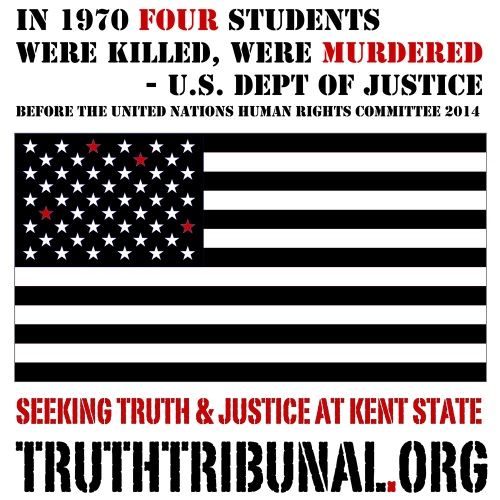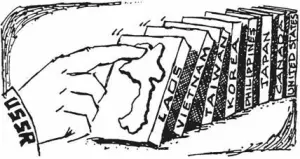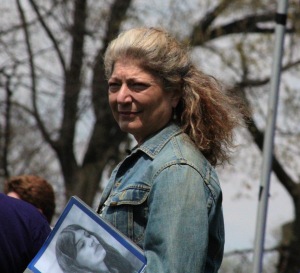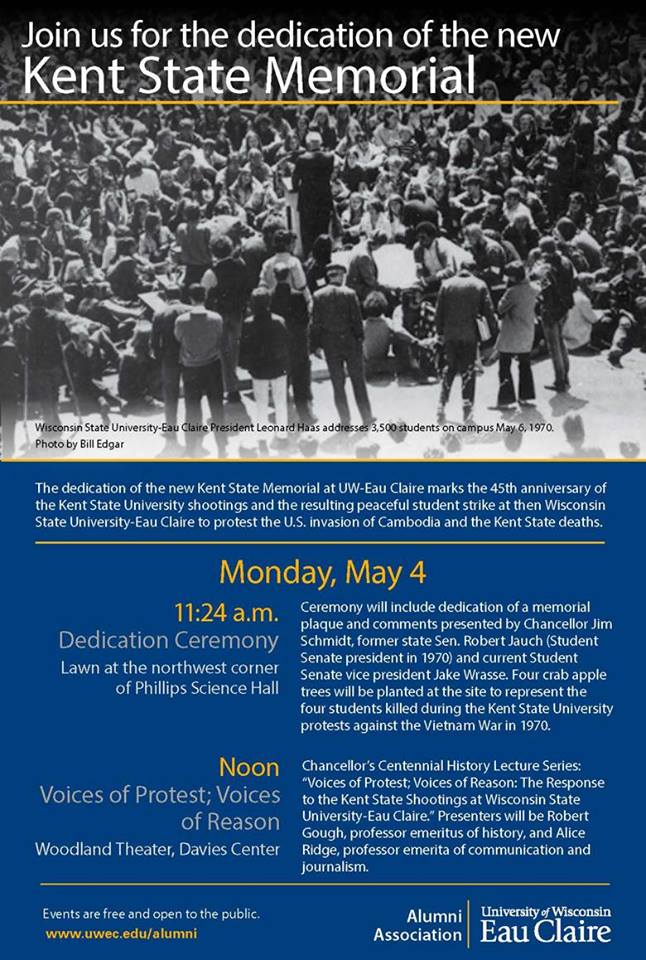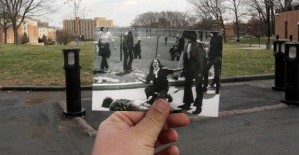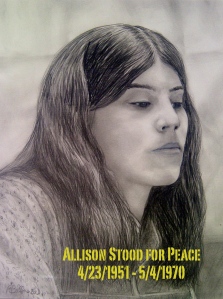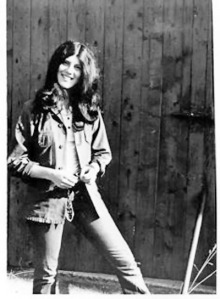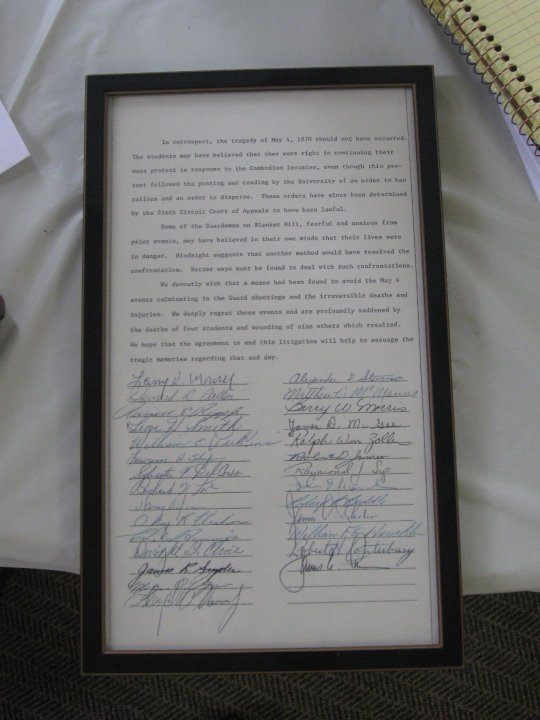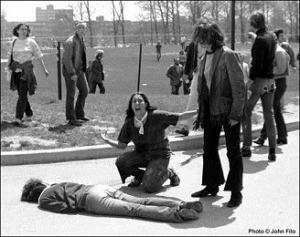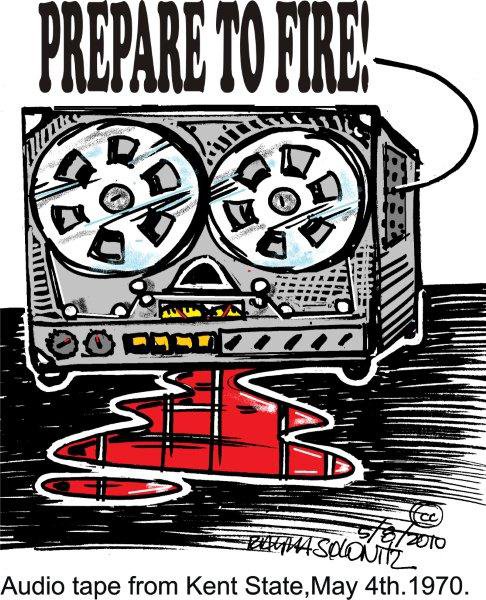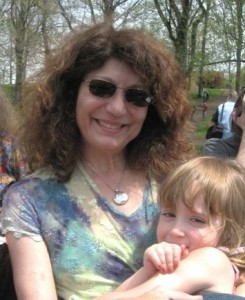In the summer of 2021, with help from writing coach Karmen Ross, I recorded stories of my life related to the Kent State massacre. These chapters document growing up with Allison and our family’s views related to Allison’s slaughter at 19 years old in the May 4, 1970 Kent State massacre. – Laurel Krause
Over the years from her friends’ accounts, I learned what Allison was doing on that Sunday before she died. But no one tells it better than Barry Levine, Allison’s boyfriend who was with her that day.
“Sunday was a peaceful day, the sun was warm and the breeze gentle. Allison spent the day quietly strolling the campus, sometimes laughing and joking, sometimes seriously discussing the past two days of disturbances on the campus. It was late afternoon when we decided to walk to the front campus and fraternize with some guardsmen.
“Upon arriving, one particular guardsman caught our eye, he stood quietly alone, a flower in his gun barrel. Taking me by my arm, Allison walked over to him. His name was Meyers, and unlike many of the soldiers we had met that day, Meyers wore a pleasant smile, and when he spoke, he did so with a gentle compassion. He said he did not want to be guarding the campus, but when asked why he didn’t leave, he looked at the ground and shyly said he couldn’t.

“Disturbed at the pleasant rapport one of his men was enjoying with us, an officer slowly strolled over and placed his arm around Meyers’ shoulder. As we watched inquisitively, Meyers’ face tightened up, his back straightened and his smile completely disappeared. The officer, yelling in Meyers’ ear, ordered him to identify himself and his division. Meyers did so, and as we watched the fear swell in the young guardsman’s eyes, the officer began –
O: Doesn’t your division have target practice next week, Meyers?
M: Yes, sir.
O: Are you going there with that silly flower?
M: No, sir.
O: Then what is it doing in your rifle barrel?
M: It was a gift, sir.
O: Do you always accept gifts Meyers?
M: No, sir.
O: Then why did you accept this one?
M: No answer
O: (Holding out his hand) What are you going to do with it Meyers?
M: (Feebly begins to remove the flower.)
O: That’s better Meyers, now straighten up and start acting like a soldier and forget all this peace stuff.
“Realizing the officer would merely throw the flower away, Allison grabbed it from his hand and gave him a look of disgust, but he only turned his back. As the officer walked away, Allison called after him, ‘What’s the matter with peace? Flowers are better than bullets!’”
Earlier that Sunday Governor Rhodes held his infamous press conference at the Kent fire station, setting a belligerent tone intended to generate disdain toward protesters on campus. Rhodes had been in a tight race running for the Senate with the primary just days away so he calculated his best shot was to show he supported law and order, and was willing to stand with Nixon against the student protesters. Kent State students would pay the price.
Governor Rhodes’ speech that day:
“We’ve seen here at the city of Kent especially, probably the most vicious form of campus-oriented violence yet perpetrated by dissident groups… they make definite plans of burning, destroying, and throwing rocks at police and at the National Guard and the Highway Patrol. …this is when we’re going to use every part of the law enforcement agency of Ohio to drive them out of Kent. We are going to eradicate the problem. We’re not going to treat the symptoms. …and these people just move from one campus to the other and terrorize the community. They’re worse than the brown shirts and the communist element and also the night riders and the vigilantes. They’re the worst type of people that we harbor in America. Now I want to say this. They are not going to take over [the] campus. I think that we’re up against the strongest, well-trained, militant, revolutionary group that has ever assembled in America.”
By Sunday there is a large, imposing and angry military presence on campus and in town. Helicopters circle overhead, townspeople deputized as proxy police harass students, and state troopers and the Ohio National Guard deploy in large numbers.
Kent State University does nothing to inform the students of what is taking place and University President Robert I. White is out of town, offering no leadership. It seems that Kent State University has handed over control to the National Guard and other military forces and has gone belly up in a quickly escalating situation.
The guardsmen had just come from a protracted wildcat strike with the Akron Teamsters over long hours and the story was promulgated that the guardsmen were exhausted and agitated. We later learn that since the strike ended days before President Nixon’s Cambodia speech, troops of guardsmen were sequestered in neighboring school yards not far from Kent State, bivouacking over a number of nights.
The son of a high-ranking guardsman explained to me years later that in the midst of the Akron wildcat strike, the Ohio National Guardsmen had been “federalized” and placed under the command of President Nixon. In order to maintain the guardsmen in their federalized role, senior command was required to keep this entire Ohio National Guard troop on duty. They are kept active near and around Kent.
The events on the night of May 3rd begin with a rally at President White’s home on campus. Within minutes the mayor announces a curfew, followed by Governor Rhodes declaring martial law and creating the pretense for mass arrests. Many students later describe the next few hours as an invasion of their campus, with a feeling that the war had come home. A deep anxiety sets over the university and surrounding communities. The helicopters beat overhead with their searchlights scanning and tank-like people carriers rolling onto campus. There are thousands of guardsmen and state police. The military presence completely overwhelms the number of students. Those returning to campus from the weekend away arrive home to a military-occupied war zone.
Many living in town are blocked from getting home. There are guns everywhere, the National Guard are armed with M1’s that had been used to fight in the Korean War. Some of the guardsmen had actually fought in Korea and were not just the young Ohio National Guard described in the newspapers.
The guardsmen were a mixed group but it is important to note that it was only in 2021 when a few guardsmen finally came forward to tell their truth about what happened at Kent State. ONG Captain Ron Snyder shared his Kent State story more than 50 years later and his self-justifying views had not changed, “It was a riot; we had to contain the enemy.” Remarkably, Snyder still works as a security guard at Kent State University, a lifetime of employment rewarded for his suppression of students in 1970.
There were also guardsmen who were the same age as the students. Some worked other jobs in town, and many grew up and were friends with students. The guardsman named Meyers involving Allison and the flower attended college at nearby University of Akron. Many guardsmen enlisted as a way to get out of the draft, their own version of draft dodging. Certainly a critical mass of them did not want to be there. Others were scared. But there was not a uniform response among them, and many were aggressive and resentful throughout the weekend’s events. The state police were another matter; they genuinely despised the students and were described as nasty. Additionally, there were the undercovers and participants from COINTELPRO, the armed, covert division of the FBI and CIA operating in domestically. COINTELPRO had a well-documented central role in opposing the civil rights movement, most prominently in its suppression of the Black Panthers. Governor Rhodes’ brown shirt speech was part of this orchestrated campaign and threw a flame into the tinder box at just the “right” time. He deliberately echoed Nixon’s own incendiary words that the students were “bums” to stoke this fire.
Mass arrests take place that night, with accompanying police abuse. Sixty-eight people are penned in the local jail in crowded cells already filled with mentally unstable prisoners. A number of students are stabbed with police bayonets, and not provided medical care. Others are brutalized by police for simply attempting to enter their homes. Word trickles out about the violence on campus and parents begin to frantically call their children; local people hide away in their homes. Students are terrified as angry guardsmen with bayonets chase after them in the night.
Rumors circulate that KSU President Robert White will be addressing the school that night, so the students peacefully assemble at his house on campus. Anxious to hear from President White they wait and wait, but White refuses to meet with them. The Ohio National Guard stand ready to use tear gas against the crowd should it get unruly.
With White’s refusal to meet the students, they move their demands into the street in front of the president’s home, peacefully sitting down in a main intersection between the campus and town. The authorities do nothing to diffuse the tension in any way and merely escalate the blunt force of the military presence.


The military forces then engage. Two Sikorsky helicopters fly low above the students gathered in front of White’s house, buzzing them with search lights sweeping over the dark campus. On the ground national guardsmen carrying M1’s with fixed bayonets herd students from President White’s home all the way across campus to Tri Towers dormitory, a long distance away. Students are pushed the whole way by menacing guardsmen muttering violent, deadly threats. Panic mounts. They injure several students with bayonets in the process. The horror of it all sets in. The war has indeed come home.
The students arrive at the Tri Towers dormitory desperate to enter and get away from the guardsmen, and Allison is among them. The doors and windows to the dormitory are all locked. It seems no one can get to safety away from the guardsmen with their bayonets coming up from behind.
Lance Kinz is a fellow student and acquaintance of Allison’s; he shares what he sees that night.
“The guardsmen were getting closer and closer. And there were helicopters and it was very, you know, frightening for people and surreal and I remember going to the dormitory and the doors were locked, and there was a group of people, and, the RA whatever they’re called wouldn’t let this group come in. Even though a number of us lived in the dormitory, and the guardsmen were closing in close and the helicopters were above and only I was standing coincidentally next to Allison, and, only because she broke down. She was so frightened. She was screaming and crying that we were going to get hurt, that they were going to hurt us. And she pleaded and she was so upset. And only because of her pleas that this guy eventually – just opened it – opened the door and we just rushed in with the guardsmen right behind us. And then we were safe. And it was only because of her being so frightened and speaking up.”
Allison gets in but Barry does not. She cries and screams because Barry has been left outside the locked doors with the guard quickly approaching. Almost out of control, she yells for them to open the doors to let him in. The resident assistant acquiesces and Barry makes it in with others, escaping injury from the guardsmen.
That night dormitory RA’s tell the students to stay away from the windows and keep their drapes closed. Students remove mattresses from their beds and place them against windows for safety from rifle fire. They come together to sleep in numbers. RA’s command: don’t move around, stay in your room. Stay down.
Allison sleeps that night in a friend’s room in Tri Towers. It is her last night.
—
READ MORE EXCERPTS to understand our view of what happened to Allison Krause in the May 4, 1970 Kent State massacre:
May 4, 1970 with Allison Krause at Kent State University https://bit.ly/3ARaFoJ
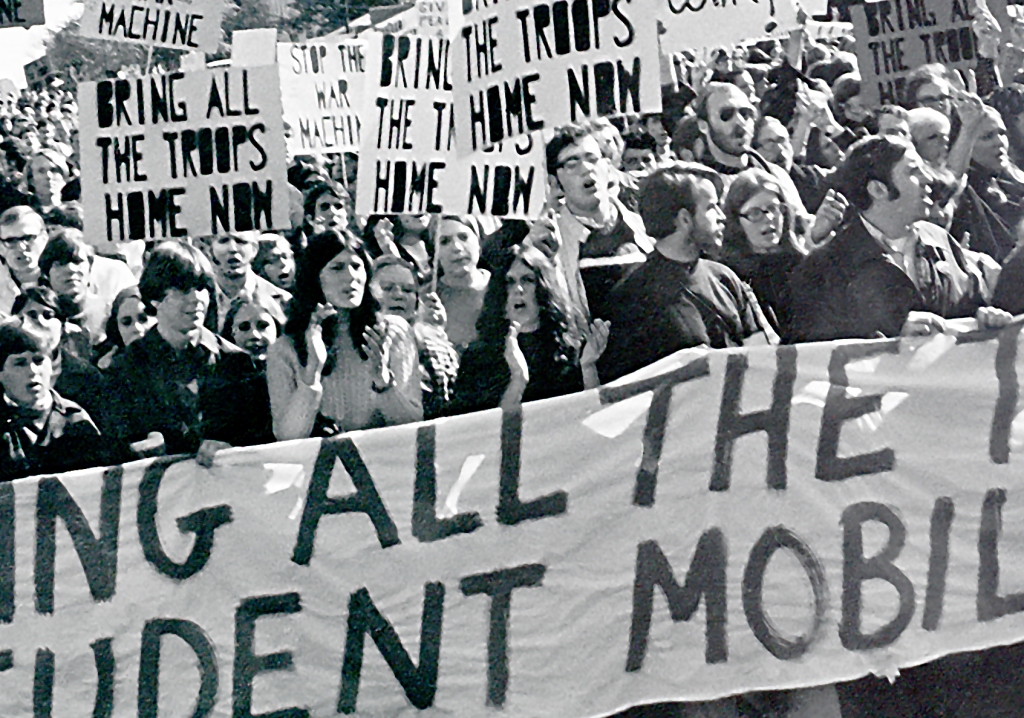
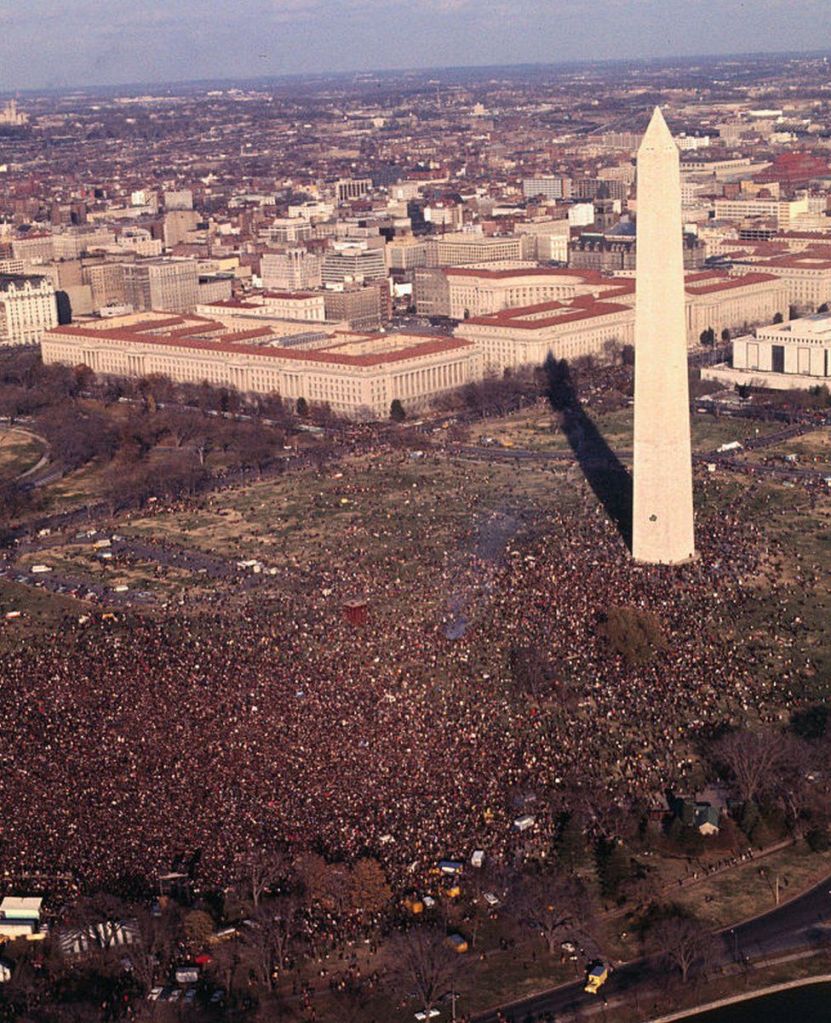
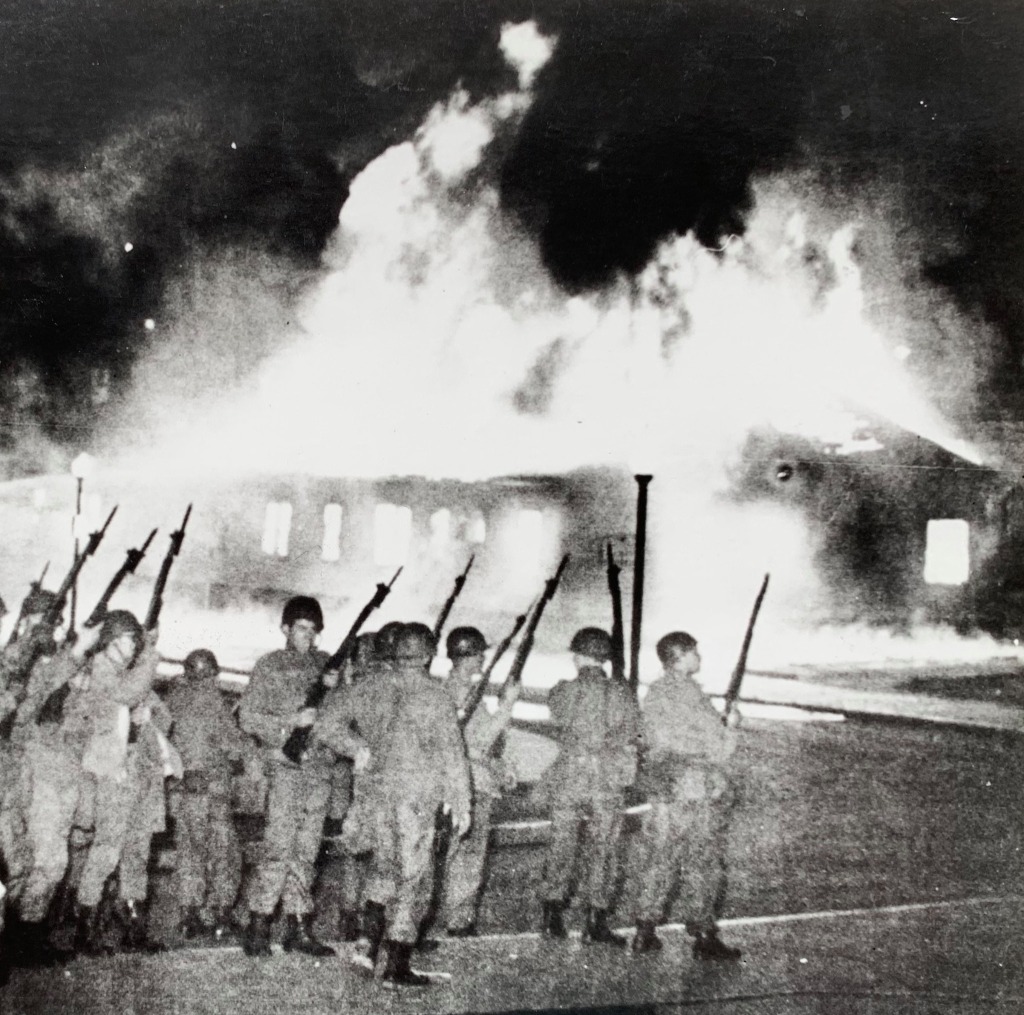
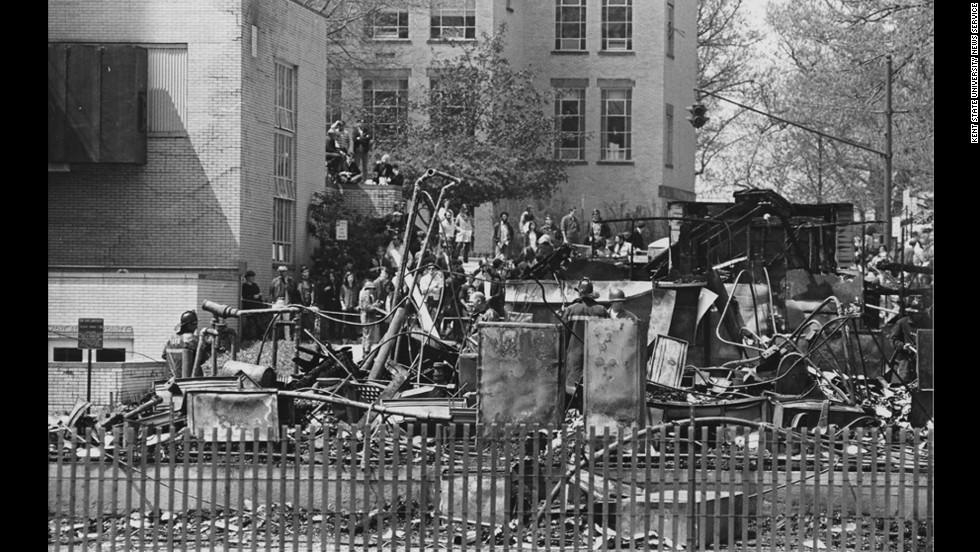
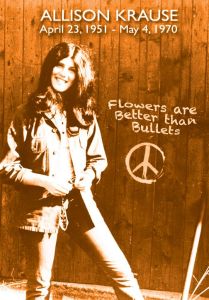 On International Women’s Day during Women’s History Month as I write this remembrance for my sister Allison Krause, I hope you’ll
On International Women’s Day during Women’s History Month as I write this remembrance for my sister Allison Krause, I hope you’ll 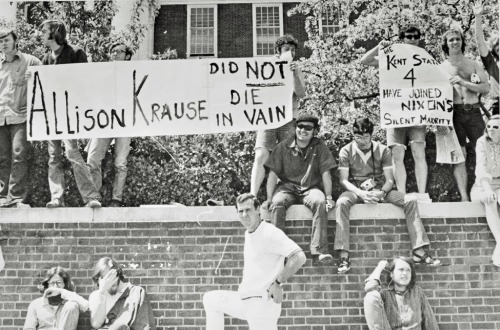
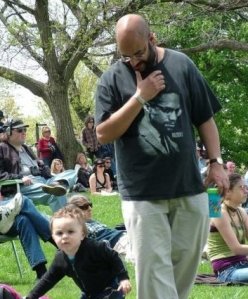 This year marks my 28th commemoration. I have spoken only once for a student, Jeffrey Miller. In my younger years as a student, I thought that Jeff was the one who I had the most in common with—like him, I considered myself a young revolutionary who deeply believed in activism and civil rights. I didn’t realize how much I have in common with Allison until this year.
This year marks my 28th commemoration. I have spoken only once for a student, Jeffrey Miller. In my younger years as a student, I thought that Jeff was the one who I had the most in common with—like him, I considered myself a young revolutionary who deeply believed in activism and civil rights. I didn’t realize how much I have in common with Allison until this year.
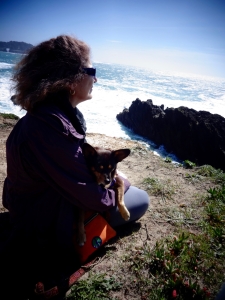 When I first chose to write this paper on Laurel Krause, I was expecting it to be just like any other short research paper on a human being. Read up on their accomplishments, read some interviews, look up different articles, et cetera, et cetera. Little did I know that I would have the wonderful opportunity to sit down and have a phone conversation with Laurel herself. It was a quiet Sunday afternoon on May 1st when I decided to make the call – I had been mulling over the decision as to when to call since hearing back from Laurel. I was extremely nervous to call and make a fool of myself.
When I first chose to write this paper on Laurel Krause, I was expecting it to be just like any other short research paper on a human being. Read up on their accomplishments, read some interviews, look up different articles, et cetera, et cetera. Little did I know that I would have the wonderful opportunity to sit down and have a phone conversation with Laurel herself. It was a quiet Sunday afternoon on May 1st when I decided to make the call – I had been mulling over the decision as to when to call since hearing back from Laurel. I was extremely nervous to call and make a fool of myself.